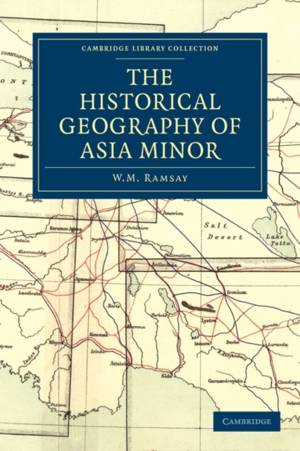
- Afhalen na 1 uur in een winkel met voorraad
- Gratis thuislevering in België vanaf € 30
- Ruim aanbod met 7 miljoen producten
- Afhalen na 1 uur in een winkel met voorraad
- Gratis thuislevering in België vanaf € 30
- Ruim aanbod met 7 miljoen producten
Zoeken
Omschrijving
The archaeologist and New Testament scholar William Mitchell Ramsay (1851-1939) first published The Historical Geography of Asia Minor in 1890, pioneering the study of classical topography. The book, based on his extensive fieldwork, is split into two parts. Part 1 examines the trade routes and road systems - both Roman and Byzantine - of Asia Minor. It discusses Hellenism and Orientalism and assesses the reliability of ancient topographical accounts of the area, including the Peutinger Table, the itineraries and a number of Ptolemy's geographical comments. Part 2 examines the political divisions of Asia Minor into cities and bishoprics. A number of maps and tables are included. Ramsay's authoritative survey opened up the historical study of the geography and topography of Asia Minor in many disciplines. His work has been used widely by archaeologists, classicists, and New Testament scholars. Still not fully superseded, it remains a key text in historical geography.
Specificaties
Betrokkenen
- Auteur(s):
- Uitgeverij:
Inhoud
- Aantal bladzijden:
- 576
- Taal:
- Engels
- Reeks:
Eigenschappen
- Productcode (EAN):
- 9781108014533
- Verschijningsdatum:
- 24/06/2010
- Uitvoering:
- Paperback
- Formaat:
- Trade paperback (VS)
- Afmetingen:
- 152 mm x 229 mm
- Gewicht:
- 834 g

Alleen bij Standaard Boekhandel
+ 235 punten op je klantenkaart van Standaard Boekhandel
Beoordelingen
We publiceren alleen reviews die voldoen aan de voorwaarden voor reviews. Bekijk onze voorwaarden voor reviews.








